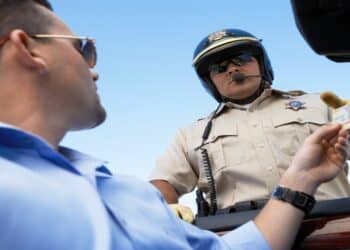Public Safety
Our Public Safety section delivers concise, authoritative reporting on the regulations, operations, and crises that underpin community security—from tightened traffic laws and interagency public security cooperation to major naval drills and high-profile law enforcement actions. We examine critical infrastructure setbacks, such as airline outages that delay cockpit-barrier mandates, power failures that ground space launches, and policy warnings regarding economic imbalances with safety implications. Stay informed on the strategic measures and emergency responses shaping public resilience.
Norway moves to strengthen power-grid protection with new rules aimed at preventing sabotage
Norway’s energy infrastructure is facing unprecedented security threats amidst rising tensions in the European region. In line with the rising...
Read moreDetailsBuilding collapse in Morocco’s Fez leaves at least 22 people dead
Tragedy struck Morocco's ancient city of Fez as two 4-storey buildings in a picturesque neighbourhood suddenly collapsed overnight and converting...
Read moreDetailsU.S. Attorney holds security coordination meeting with Miami International Airport to reinforce federal–local safety cooperation
The federal prosecution authorities have reinforced their collaboration with one of the busiest international entry points within America. The collaboration...
Read moreDetailsChinese authorities detain activists following a deadly residential fire in Hong Kong
The political climate in Hong Kong is becoming more oppressive as mainland Chinese authorities begin a new crackdown on dissent....
Read moreDetailsDeadly attack at Sydney’s Bondi Beach leaves at least 16 dead after shooting at Jewish festival
Sydney's famous Bondi Beach turned from a party playpen to a seething riot when gunfire broke up a peaceful Hanukkah...
Read moreDetailsCompton mayor urges removal of public-safety committee chair following a confrontation at city hall
Things took a sour turn in Compton last week. The mayor of Compton, Emma Sharif, is now asking for the...
Read moreDetailsSkagit County authorities mandate evacuations as severe flooding risks escalate
Emergency officials have issued urgent evacuation orders across western Washington as dangerous weather conditions threaten thousands of residents. Heavy rainfall...
Read moreDetailsSevere flooding and landslides in Sumatra push Indonesia’s death toll beyond 700
Indonesia faces one of its most devastating natural disasters in recent memory as catastrophic flooding and landslides continue to ravage...
Read moreDetailsHPE–NVIDIA partnership expands with new “AI Factory Lab” in Grenoble and a linked Private-AI hub in the UK
The European continent is set to experience a radical shift in the AI sector following the announcement by two technology...
Read moreDetailsJeju Air crash families demand transparency and an independent inquiry as concerns grow in South Korea
Families of the 179 people who lost their lives last year due to the tragic Jeju Air crash have staged...
Read moreDetailsHong Kong high-rise disaster claims 159 lives, becoming the city’s worst fire in decades
A massive fire broke out at the Wang Fuk Court estates in Hong Kong and destroyed everything that stood in...
Read moreDetailsPowerful 6.3 quake strikes northern Afghanistan, leaving dozens dead as harsh winter sets in
At around 12:59 a.m. on the night of November 4, 2025, the earth shook violently when a devastating earthquake of...
Read moreDetailsSevere floods and landslides in Sumatra kill more than 800, prompting nationwide emergency appeals
Indonesia finds itself caught up in its worst natural disaster as overflowing floods and landslides wreak havoc on the provinces...
Read moreDetailsInternational nuclear safety agencies convene as radiological risk concerns rise globally
Global nuclear safety agencies are gearing up to face unprecedented radiological risk. The International Atomic Energy Agency has heightened its...
Read moreDetailsCentral Java landslide kills three and leaves many missing following intense monsoon rainfall
A devastating landslide struck Cibeunying village in Central Java's Cilacap regency Thursday night, claiming three lives and leaving twenty people...
Read moreDetailsHong Kong’s deadliest blaze exposes major safety failures despite repeated resident warnings
Hong Kong's most devastating apartment fire in decades has claimed at least 151 lives, exposing catastrophic safety failures that residents...
Read moreDetailsIllinois police kick off holiday crackdown targeting impaired driving and seat-belt violations
Illinois law enforcement agencies are undertaking the most significant campaign in several years to ensure road safety during the Thanksgiving...
Read moreDetailsRescue teams mobilize across Southeast Asia after floods and landslides leave more than 1,100 dead
Record-breaking landslides and flooding have caused havoc in the Southeast Asia region. This has resulted in widespread rescue efforts due...
Read moreDetailsFinCEN issues advisory as U.S. Treasury flags rising financial-crime risks
The U.S. Treasury Department has escalated its financial surveillance efforts by issuing a comprehensive advisory targeting cross-border money transfers linked...
Read moreDetailsWest New York rolls out coordinated winter-preparedness strategy to strengthen public safety
Winter storms in Western New York have become increasingly severe and unpredictable, prompting state and local agencies to develop comprehensive...
Read moreDetailsSan Antonio launches public campaign to combat mailbox theft and bolster neighborhood security
San Antonio residents are facing an escalating threat that strikes at the heart of personal security and financial safety. Mail...
Read moreDetailsHomeland Security addresses two suspicious mail incidents sent to ICE facilities
Federal law enforcement agencies are investigating an alarming rise in threats against immigration law enforcement officials after a delivery of...
Read moreDetailsExpanded California Highway Patrol operations seize 2,000 pounds of illegal drugs in three months
California Highway Patrol (CHP) saturation patrols that were introduced in crime suppression teams have achieved significant success in the first...
Read moreDetailsAlaska deploys 17 newly graduated public-safety officers to help address trooper shortages
The state of Alaska has welcomed 17 new law enforcement officers, all of whom recently graduated from the Alaska Law...
Read moreDetailsUK says escalating Russian drone and missile strikes are deepening Ukraine’s humanitarian emergency
The diplomatic circles in Britain have come out strongly warning against the escalating attacks by the Russian government on the...
Read moreDetailsTrump administration files lawsuit against California over ban on masked federal agents
The Trump administration has launched a federal court challenge against California's groundbreaking law prohibiting most law enforcement officers from wearing...
Read moreDetailsChicago-area officials declare civil emergency after anti-ICE riots and bomb threats escalate
The suburb of Broadview, Illinois, has issued a Civil Emergency Order as the community faces the challenges of rising levels...
Read moreDetailsU.S. House votes to roll back D.C.’s cashless bail and policing limits
The U.S. House of Representatives has passed two bills that reformat law enforcement in Washington, D.C., and represent what appears...
Read moreDetailsFederal immigration enforcement operations widen to additional counties in North Carolina
Federal immigration officials have significantly ramped up their enforcement efforts around North Carolina, extending their reach beyond Charlotte to include...
Read moreDetailsFBI issues alert as scammers impersonating ICE agents undermine public trust
The FBI has released an alert regarding the problem of perpetrators impersonating ICE agents with the intent of committing various...
Read moreDetailsFAA halts planned flight cuts as air-traffic controller shortages persist
The Federal Aviation Administration has put a hold on the proposed flight cuts of 6 percent, having called a halt...
Read moreDetailsMonroe County launches “MonroeAlert,” a new countywide public-safety notification system
Monroe County Executive Adam Bello launched MonroeAlert, an innovative safety initiative, to inform citizens in real-time about any emergency. MonroeAlert,...
Read moreDetailsU.S. designates four Europe-based organizations as terrorist groups
President Donald Trump’s administration recently placed four Europe-based entities on its list of "specially designated global terrorists," representing the latest...
Read moreDetailsNew Orleans seeks public feedback on new road-safety priority corridor plan
The authorities of New Orleans are encouraging residents to offer their input into the development of this bold initiative called...
Read moreDetailsU.S. Senate to examine shutdown-related risks to aviation safety in upcoming hearing
The U.S. Senate Commerce aviation subcommittee has organized a very important hearing to review the disastrous effects of government shutdowns...
Read moreDetailsRound Rock, Texas launches new Special Assignments Unit to strengthen local public safety
Round Rock's police department just unveiled a groundbreaking approach to community safety that's already turning heads across Texas. The city's...
Read moreDetailsGerman authorities arrest suspect over blood-swastika vandalism in Hanau
A suspect has been taken into custody by German law enforcement officials in one of the most shocking hate crimes...
Read moreDetailsVoters approve public safety funding measures across several U.S. states on election day
The American voter has made their support for public safety measures known in the recent elections, with many states approving...
Read moreDetailsHomeland Security introduces new authority to preempt and counter violent protests at federal sites
The Department of Homeland Security has rolled out extensive new rules that greatly increase the enforcement powers of federal law...
Read moreDetailsNationwide UK campaign targets uninsured drivers to improve road safety
The British government has embarked on an unusual crackdown on drivers who are uninsured that has uncovered alarming statistics about...
Read moreDetailsFBI issues alert over scammers impersonating ICE agents to target the public
Authorities are warning about crimes being committed by individuals masquerading as ICE officials. The FBI recently put out a warning...
Read moreDetailsTexas public safety drones increasingly deployed to monitor protest activity
Texas police forces have notably increased the number of unmanned aircraft system surveillance missions carried out to monitor public assemblies...
Read moreDetailsEni and PETRONAS form $15 billion joint venture spanning operations in Indonesia and Malaysia
Italian energy giant Eni and Malaysian national oil company PETRONAS have struck a transformative deal that could reshape Southeast Asia's...
Read moreDetailsThailand issues high-alert travel warning for border provinces over rising security risks
This is not looking good for Thailand at the moment. It seems like they have their hands full with border...
Read moreDetailsNational Guard to establish rapid-response units nationwide for civil unrest training by 2026
The USA has been developing the Quick Reaction Forces for the National Guard in each of the 50 states of...
Read moreDetailsEgypt and U.S. deepen energy cooperation during ADIPEC 2025 discussions
Egypt and the United States have strengthened their strategic energy partnership through high-level discussions at ADIPEC 2025 in Abu Dhabi....
Read moreDetailsFlooding in central Vietnam leaves 36 dead as rescue operations continue
The situation in Vietnam is just catastrophic. The country is being battered by floods, and it's absolutely heartbreaking. Just now,...
Read moreDetailsUAE raises travel alert as regional security risks intensify
The United Arab Emirates has added itself to the list of countries that issue high-level travel alert advisories as a...
Read moreDetailsNew York City schools pilot direct 911 link to improve emergency response times
New York City has set up the country's first-ever emergency alert system whereby the city's public schools are linked to...
Read moreDetailsKey gun-violence prevention groups lose eligibility for federal funding tied to their initiatives
“Gun-Violence Prevention” organizations in America face an unprecedented crisis in terms of the progress they've made in the past decades...
Read moreDetails


















































